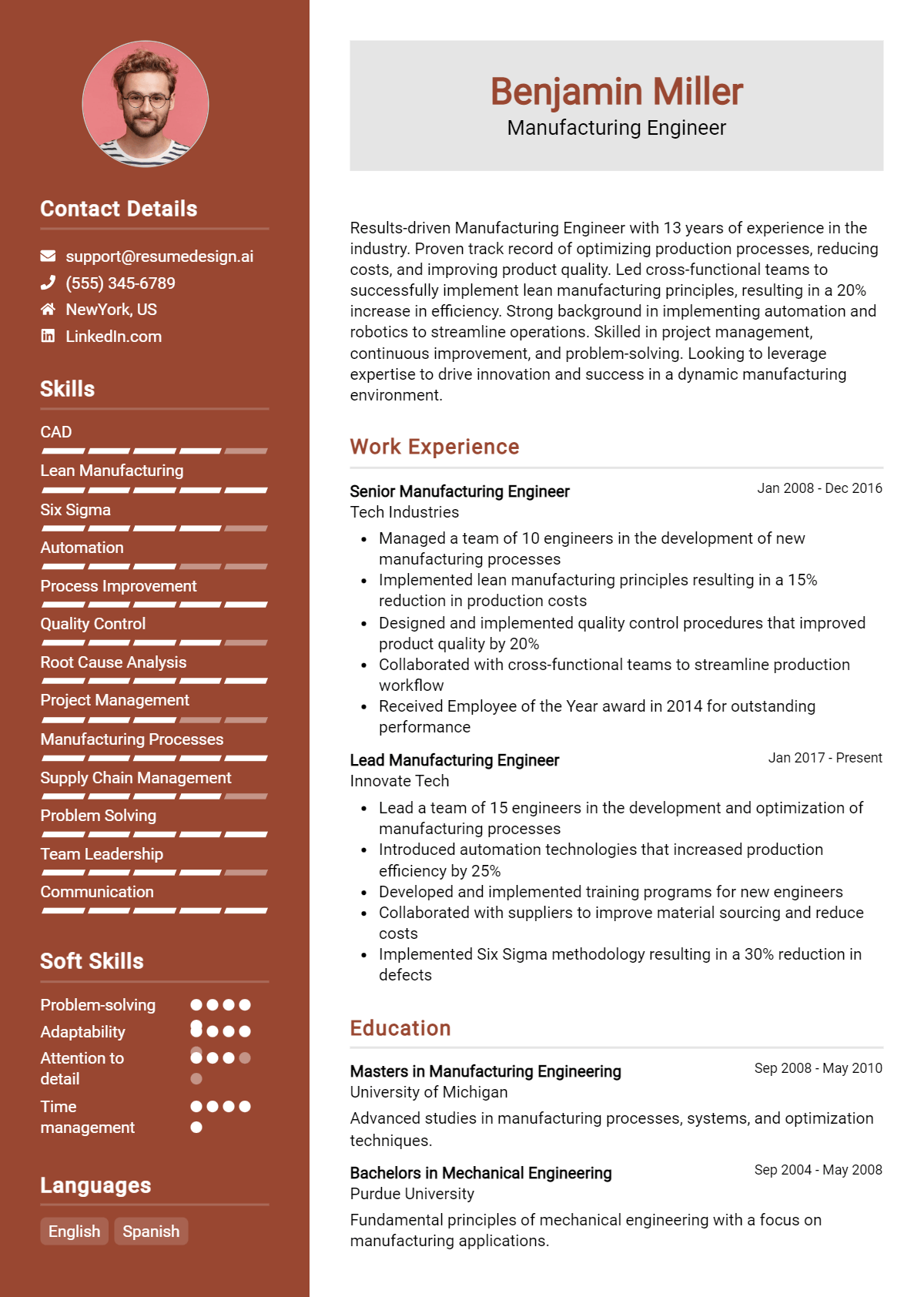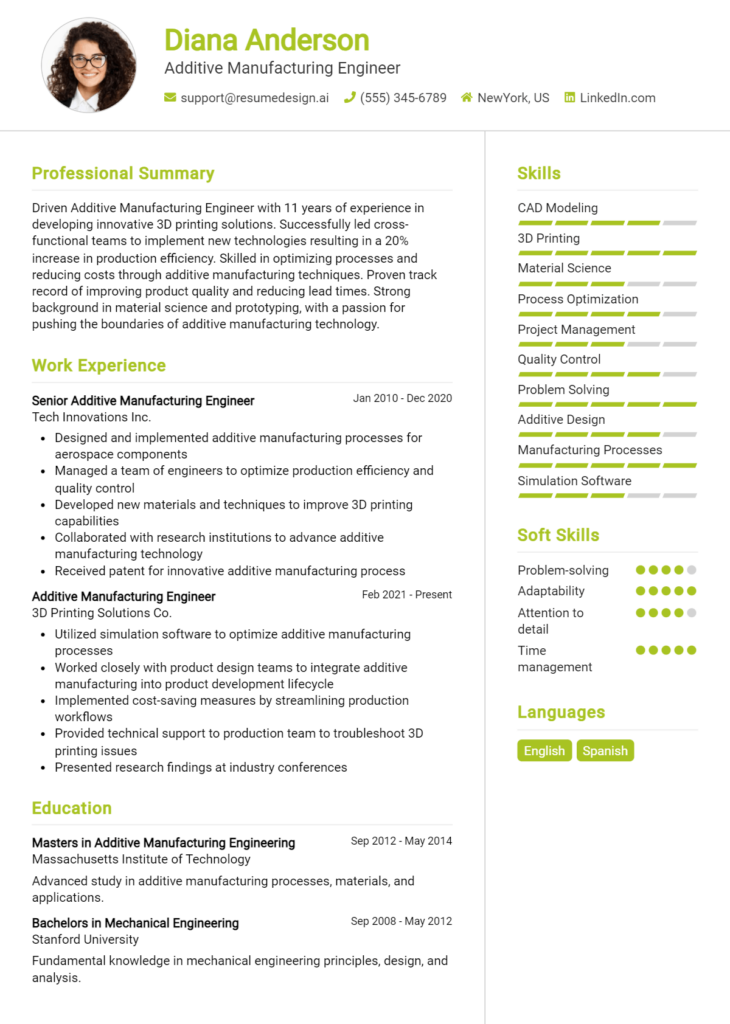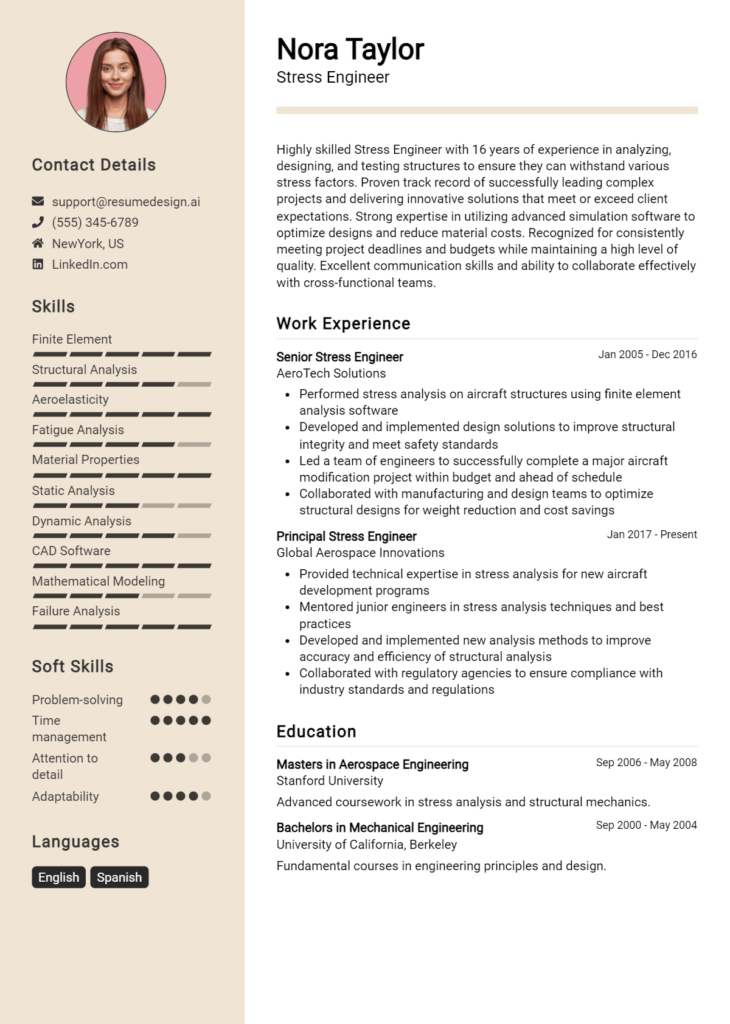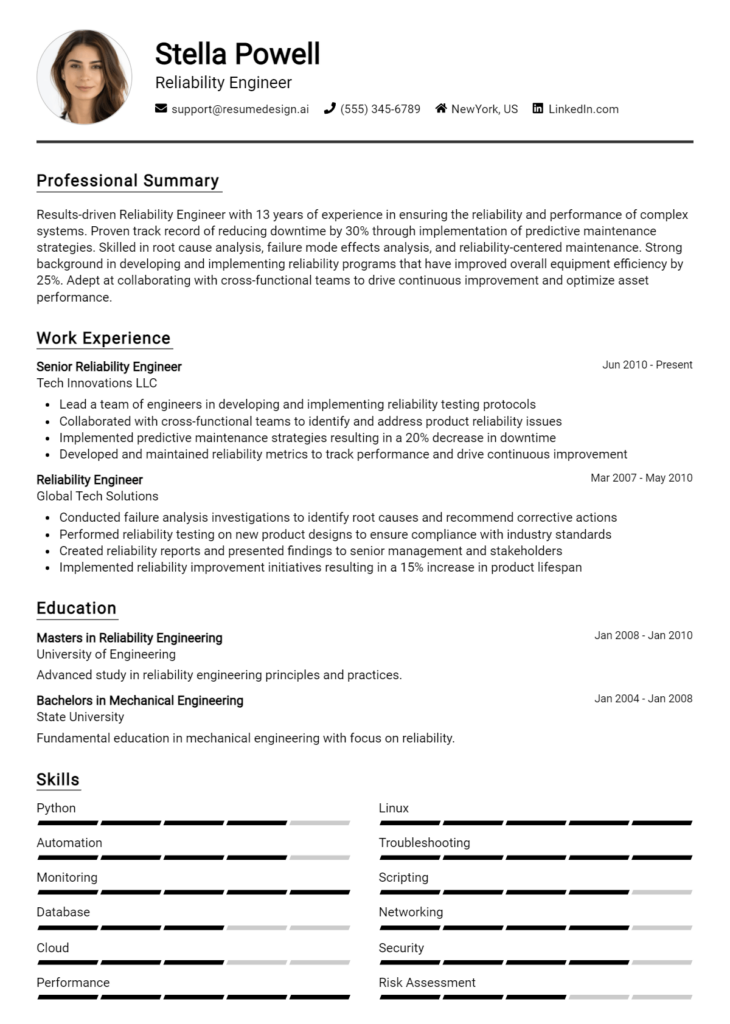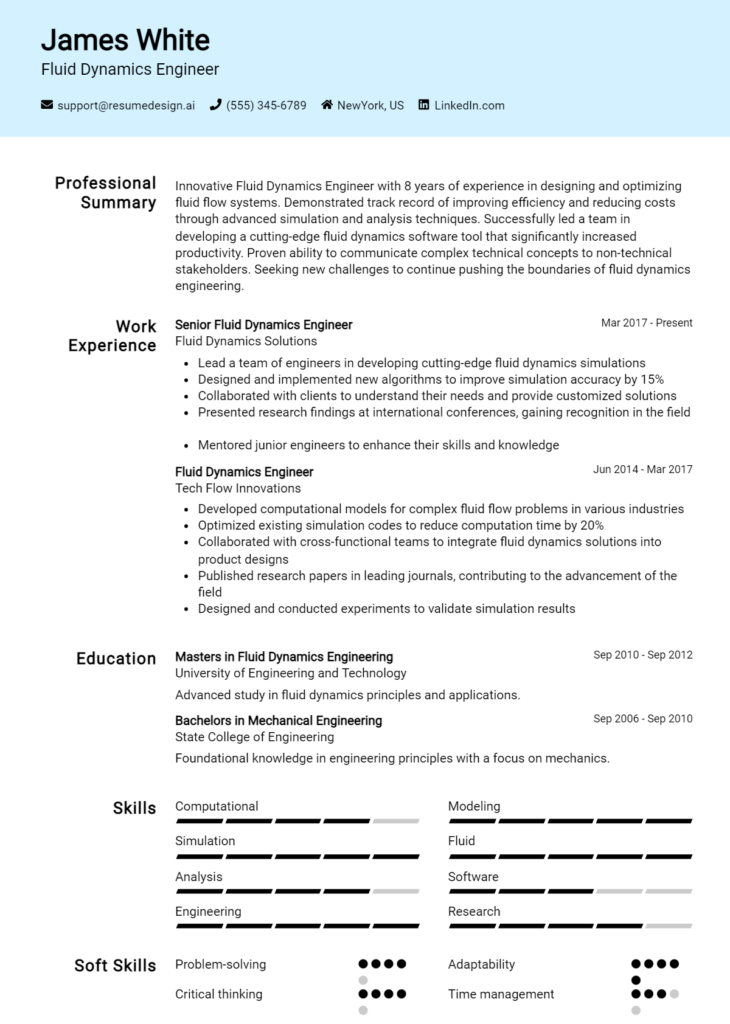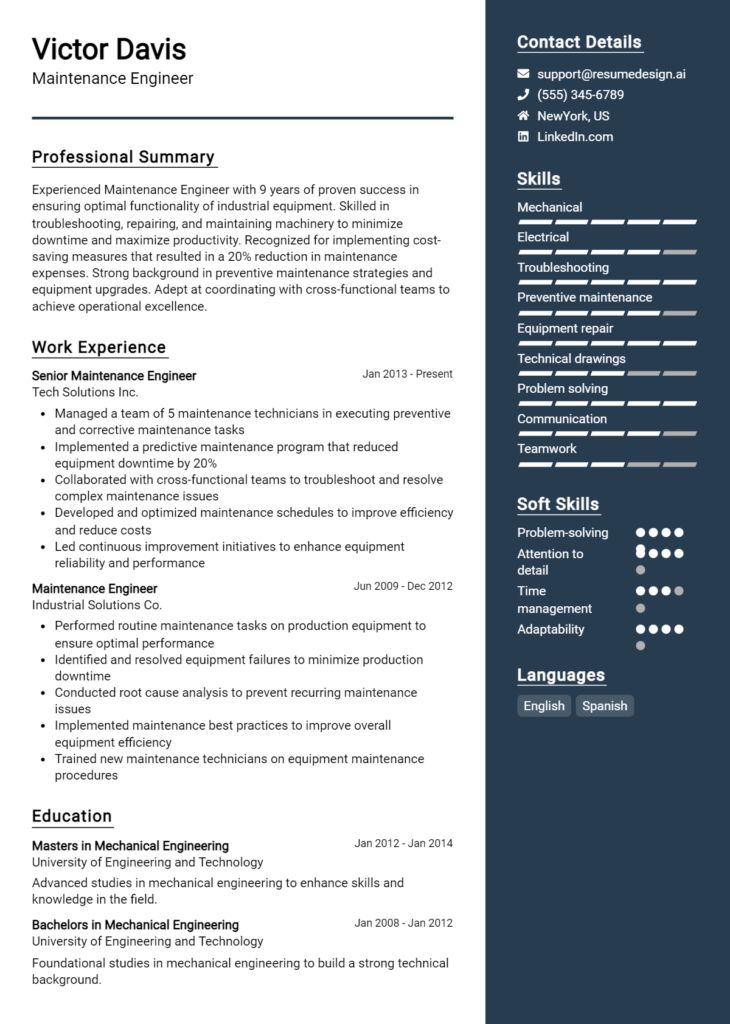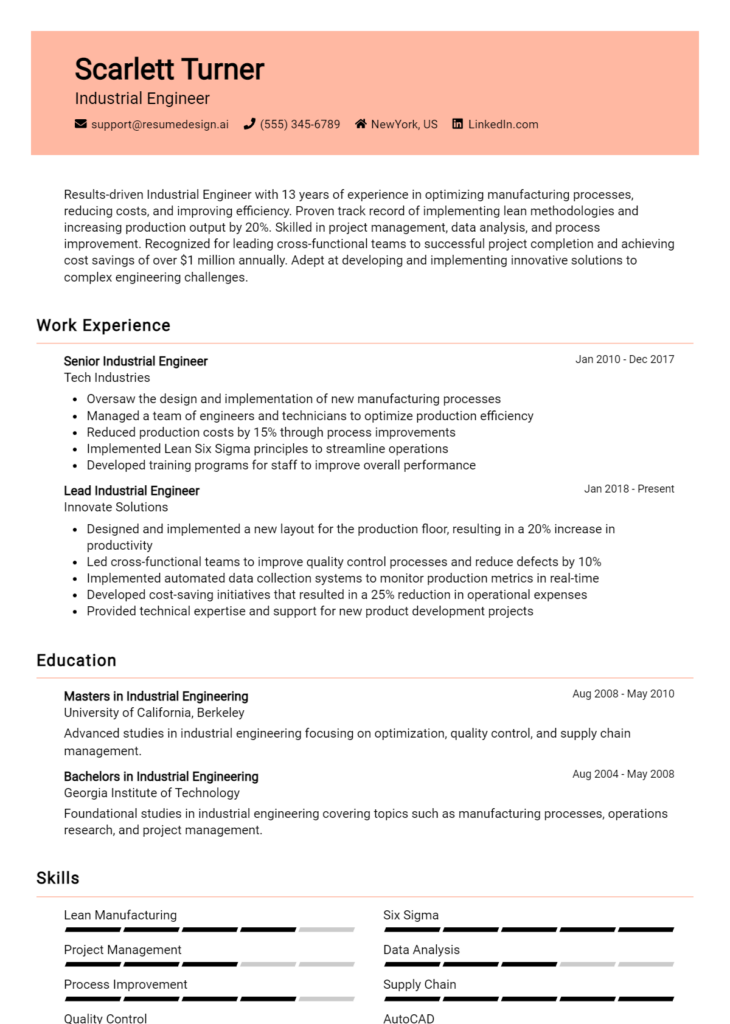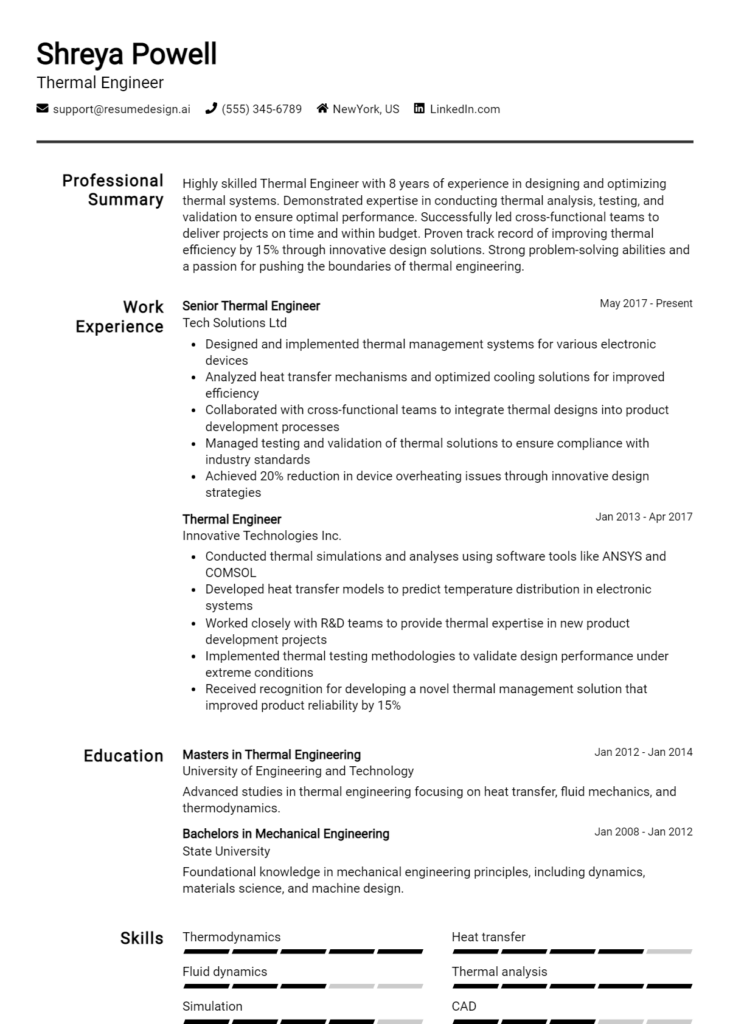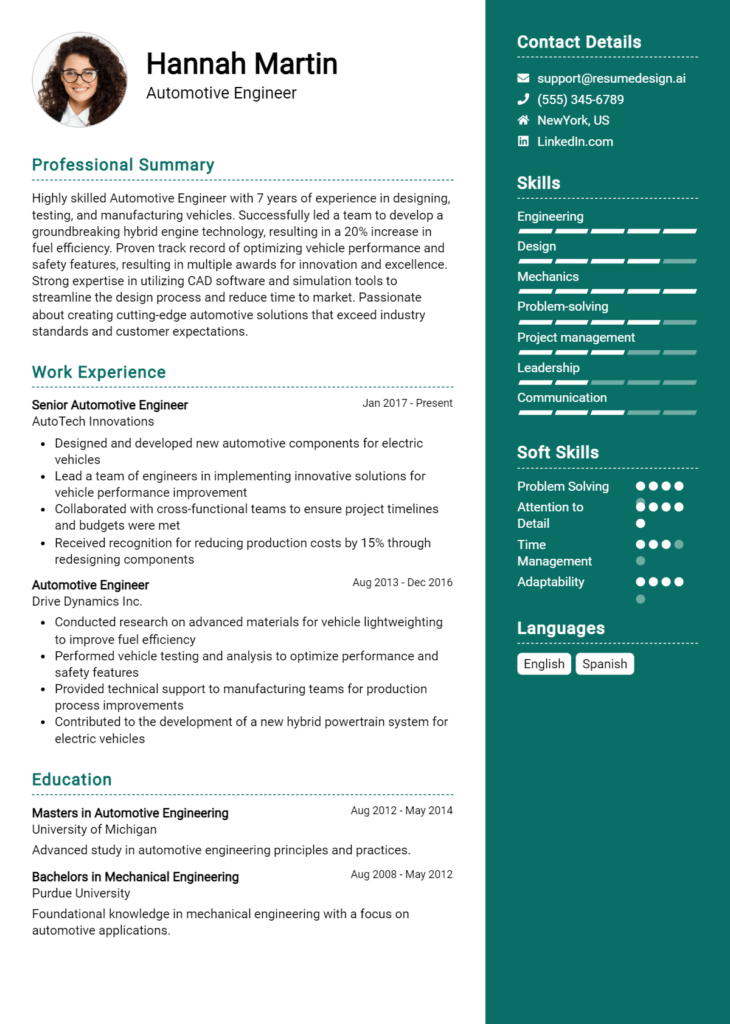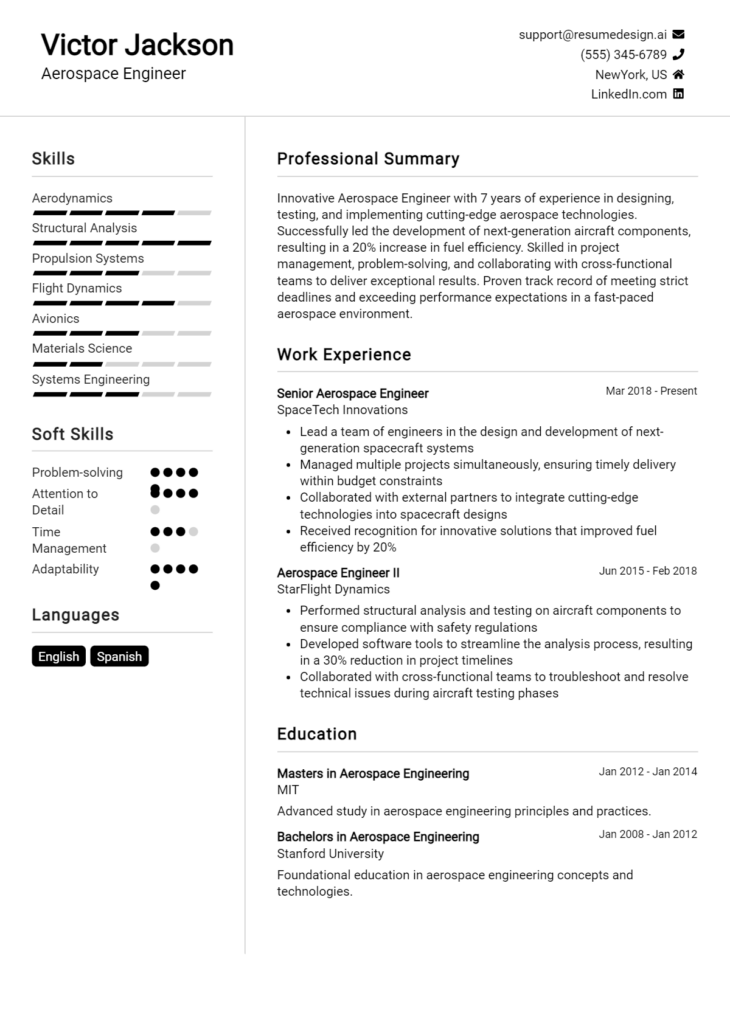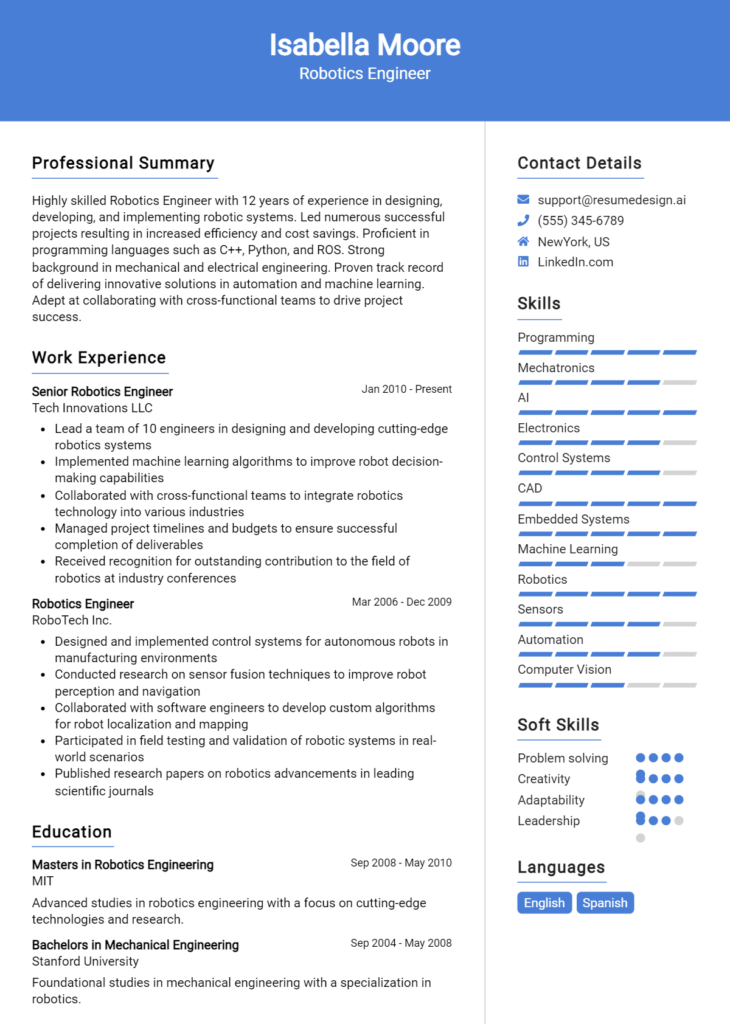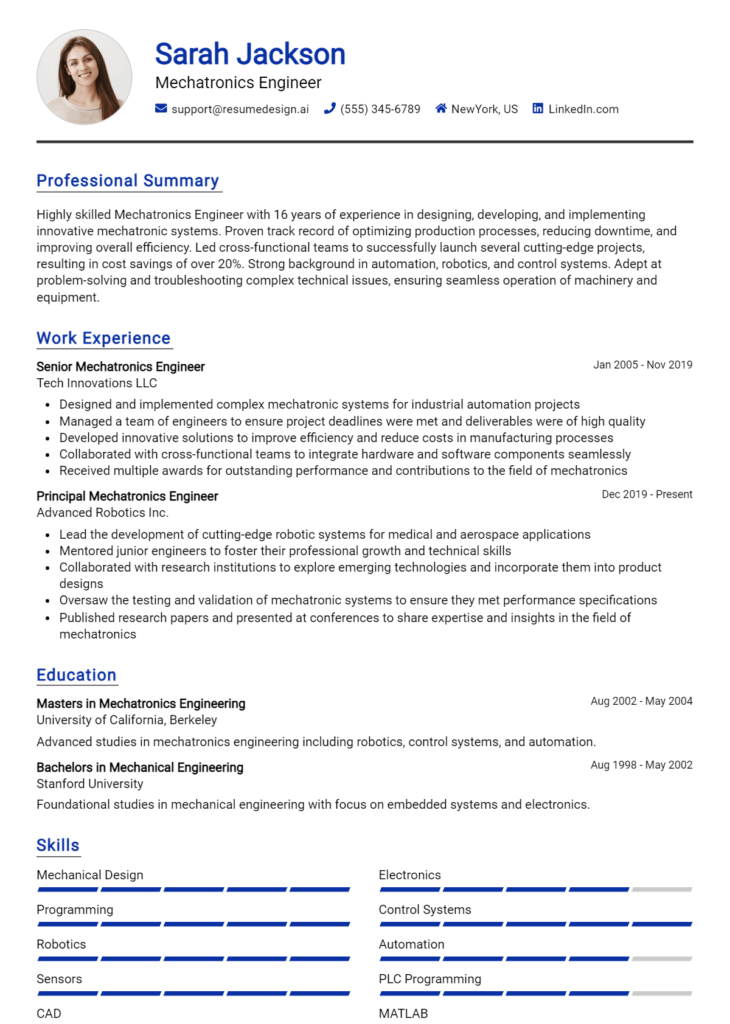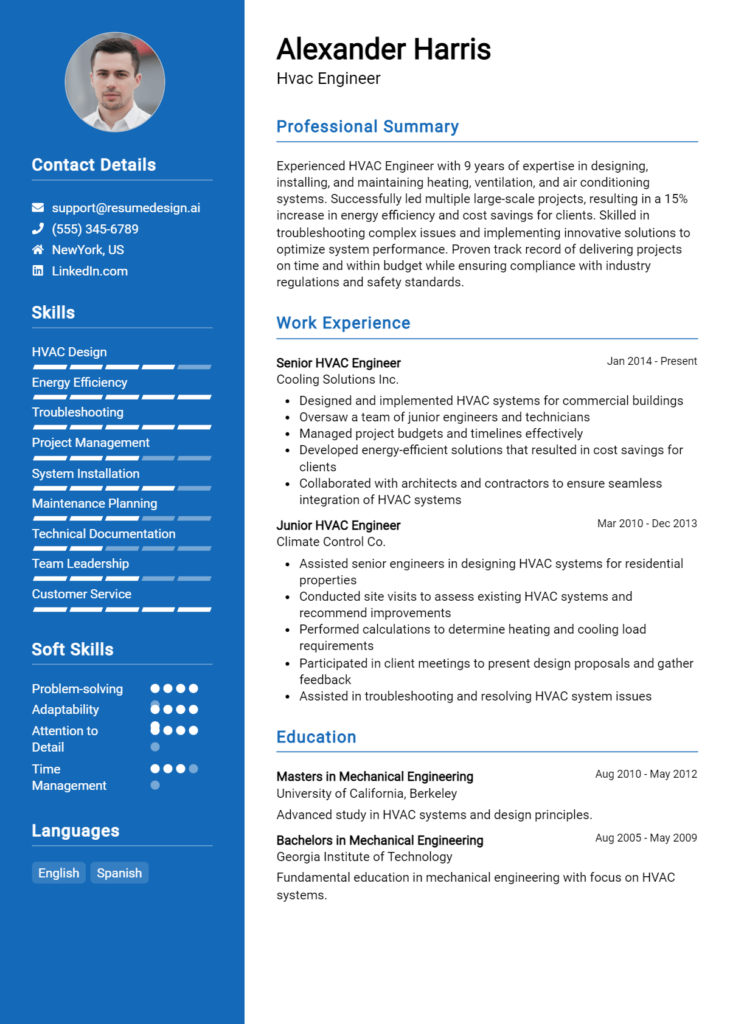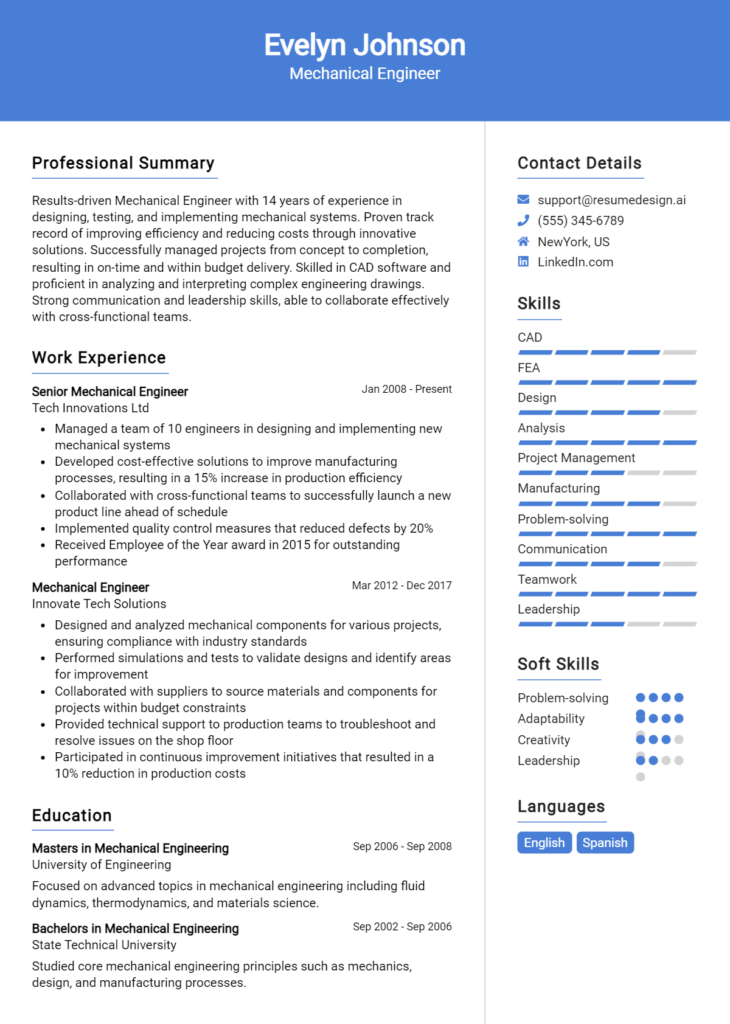Manufacturing Engineer Core Responsibilities
A Manufacturing Engineer plays a crucial role in optimizing production processes by integrating technical expertise, operational efficiency, and problem-solving skills. They collaborate with various departments, such as design, quality assurance, and supply chain, to ensure seamless operations and high-quality output. This role requires proficiency in process improvement methodologies, CAD software, and data analysis. A well-structured resume highlighting these competencies can effectively showcase a candidate's ability to contribute to the organization's goals, driving productivity and innovation.
Common Responsibilities Listed on Manufacturing Engineer Resume
- Design and implement manufacturing processes and systems.
- Conduct root cause analysis to resolve production issues.
- Collaborate with cross-functional teams to enhance product design.
- Develop and maintain process documentation and standards.
- Optimize production workflows to improve efficiency and reduce waste.
- Evaluate and recommend equipment and technology upgrades.
- Implement quality control measures to ensure product standards.
- Conduct training for staff on new processes and technologies.
- Monitor production metrics and suggest improvements.
- Assist in budget planning and cost analysis for projects.
- Support compliance with safety and regulatory standards.
High-Level Resume Tips for Manufacturing Engineer Professionals
In the competitive field of manufacturing engineering, a well-crafted resume is essential for making a strong first impression on potential employers. Your resume serves as a snapshot of your professional journey, showcasing not just your skills, but also your achievements and contributions to previous roles. It is crucial for manufacturing engineers to present a clear narrative of their expertise in designing, improving, and implementing manufacturing processes. This guide aims to equip you with practical and actionable resume tips specifically tailored for manufacturing engineer professionals, ensuring that your application stands out in a crowded job market.
Top Resume Tips for Manufacturing Engineer Professionals
- Tailor your resume to each job description by using keywords and phrases that match the specific requirements of the position.
- Highlight relevant experience by focusing on roles that directly relate to manufacturing engineering, emphasizing your responsibilities and achievements.
- Quantify your achievements where possible, using metrics such as percentage improvements, cost savings, or production increases to demonstrate your impact.
- Showcase industry-specific skills such as CAD software proficiency, lean manufacturing principles, and quality control methodologies.
- Include certifications and training relevant to manufacturing engineering, such as Six Sigma or ISO standards, to enhance your credibility.
- Use action verbs to describe your experiences, ensuring that your contributions are communicated clearly and dynamically.
- Incorporate a summary statement at the top of your resume that encapsulates your key skills and career goals, tailored to the manufacturing sector.
- Ensure your resume is formatted for clarity and readability, using bullet points and consistent headings to guide the reader through your qualifications.
- Keep your resume concise, ideally one page, especially if you have less than ten years of experience, to maintain the hiring manager's attention.
By implementing these tips, manufacturing engineer professionals can significantly enhance their resumes, increasing their chances of landing job interviews in a highly competitive field. A polished and well-structured resume that effectively showcases your skills and accomplishments can set you apart, presenting you as a strong candidate ready to contribute to potential employers.
Why Resume Headlines & Titles are Important for Manufacturing Engineer
In the competitive field of manufacturing engineering, the importance of a well-crafted resume headline or title cannot be overstated. A strong headline serves as the first impression for hiring managers, capturing their attention and summarizing a candidate's key qualifications in one impactful phrase. It should be concise, relevant, and directly related to the specific job being applied for, effectively showcasing the applicant's expertise and unique value proposition. A compelling headline can set the tone for the rest of the resume, making it crucial for candidates to invest time in creating a title that resonates with their target employers.
Best Practices for Crafting Resume Headlines for Manufacturing Engineer
- Keep it concise: Limit headlines to a single phrase or a few impactful words.
- Be specific: Tailor the title to reflect the specific manufacturing engineering role you are applying for.
- Highlight key skills: Incorporate essential skills or certifications relevant to the position.
- Use action words: Start with strong verbs or adjectives that convey your expertise and achievements.
- Include years of experience: If applicable, mention your years of experience to demonstrate your level of expertise.
- Showcase unique qualifications: Highlight any specialized knowledge or unique skills that set you apart from other candidates.
- Avoid jargon: Use clear and straightforward language that can be easily understood by hiring managers.
- Align with job description: Ensure your headline aligns with the keywords and phrases found in the job posting.
Example Resume Headlines for Manufacturing Engineer
Strong Resume Headlines
Results-Driven Manufacturing Engineer with 10+ Years in Lean Process Improvement
Certified Six Sigma Black Belt Specializing in Quality Control and Efficiency Optimization
Innovative Manufacturing Engineer with Expertise in CAD Design and Automation Solutions
Experienced Manufacturing Engineer with a Proven Track Record in Project Management and Cost Reduction
Weak Resume Headlines
Engineer with Experience
Manufacturing Professional
Seeking Opportunities in Engineering
The strong headlines are effective because they provide clear, targeted information that directly addresses the qualifications and strengths of the candidate relevant to manufacturing engineering roles. They utilize specific terminology and showcase the candidate's experience or skills, making it easy for hiring managers to identify key attributes at a glance. In contrast, the weak headlines fail to impress due to their vagueness and lack of detail, which do not communicate any unique selling points or relevant expertise. This lack of specificity can result in a missed opportunity for candidates to distinguish themselves in a competitive job market.
Writing an Exceptional Manufacturing Engineer Resume Summary
A well-crafted resume summary is crucial for a Manufacturing Engineer, as it serves as the first impression on hiring managers. This brief introductory statement quickly captures attention by highlighting key skills, relevant experience, and notable accomplishments that align with the specific job role. A strong summary is concise yet impactful, providing a snapshot of the candidate’s qualifications that encourages further reading. Tailoring the summary to the job description ensures it resonates with the employer, showcasing the candidate's suitability for the position from the outset.
Best Practices for Writing a Manufacturing Engineer Resume Summary
- Quantify Achievements: Use specific numbers or percentages to demonstrate the impact of your work.
- Focus on Relevant Skills: Highlight technical skills and competencies that are directly applicable to the job.
- Be Concise: Keep your summary to 3-5 sentences to maintain clarity and brevity.
- Tailor to the Job Description: Customize your summary to reflect the key requirements and responsibilities outlined in the job posting.
- Use Action Verbs: Start sentences with strong action verbs to convey confidence and initiative.
- Highlight Industry Experience: Mention your years of experience and any relevant industries you have worked in.
- Showcase Problem-Solving: Include examples of how you have solved challenges in previous roles.
- Include Certifications or Special Training: Mention any relevant certifications or specialized training that sets you apart.
Example Manufacturing Engineer Resume Summaries
Strong Resume Summaries
Results-driven Manufacturing Engineer with over 7 years of experience improving production efficiency. Achieved a 20% reduction in waste through process optimization initiatives, leading to annual cost savings of $150,000.
Detail-oriented Manufacturing Engineer skilled in Lean Manufacturing and Six Sigma methodologies. Successfully led a team project that increased assembly line throughput by 30% while maintaining quality standards.
Dynamic Manufacturing Engineer with a proven track record of implementing innovative design solutions. Developed a new tooling system that decreased production time by 15%, significantly enhancing overall output.
Experienced Manufacturing Engineer with expertise in CAD software and process simulation. Spearheaded the transition to a new ERP system, resulting in a 25% improvement in inventory accuracy and a 40% reduction in lead times.
Weak Resume Summaries
Manufacturing Engineer with some experience in the field. Looking for a new opportunity to apply my skills.
Dedicated and hardworking engineer interested in manufacturing and production processes.
The strong resume summaries stand out because they include specific accomplishments and quantifiable results, demonstrating the candidate's impact in previous roles. They are tailored to highlight relevant skills and experiences, making them appealing to hiring managers. In contrast, the weak summaries lack detail and specificity, making it difficult for hiring managers to gauge the candidate's qualifications or contributions. They are too generic and fail to communicate the unique value the candidate can bring to the position.
Work Experience Section for Manufacturing Engineer Resume
The work experience section of a Manufacturing Engineer resume is critical as it serves as a showcase of the candidate's technical skills, leadership abilities, and commitment to delivering high-quality products. This section not only highlights the practical application of engineering principles but also reflects the candidate's capacity to manage teams effectively and drive projects to successful completion. By quantifying achievements and aligning their experience with industry standards, candidates can demonstrate their value to potential employers and set themselves apart from the competition.
Best Practices for Manufacturing Engineer Work Experience
- Emphasize technical expertise by detailing specific tools, technologies, and methodologies used in previous roles.
- Quantify results with metrics such as cost savings, efficiency improvements, and production increases to provide tangible evidence of your impact.
- Highlight collaboration by mentioning cross-functional teams and partnerships that contributed to project success.
- Use action verbs to describe responsibilities and achievements, making your contributions clear and dynamic.
- Tailor your experience to align with the job description, ensuring that relevant skills and achievements are front and center.
- Showcase leadership roles, detailing how you mentored team members or led projects to completion.
- Include certifications, training, and continuous education that demonstrate your commitment to professional development.
- Be concise but informative, ensuring each bullet point adds value and relevance to your experience.
Example Work Experiences for Manufacturing Engineer
Strong Experiences
- Led a team of 10 engineers in the implementation of a Lean Manufacturing initiative, resulting in a 25% reduction in production costs and a 30% increase in product throughput.
- Developed and executed a quality control process that decreased defect rates from 5% to 1%, significantly enhancing product reliability and customer satisfaction.
- Collaborated with cross-functional teams to design and launch a new product line that generated $2 million in revenue within the first year of production.
- Optimized equipment maintenance schedules using predictive analytics, leading to a 15% decrease in downtime and a 20% increase in overall equipment effectiveness (OEE).
Weak Experiences
- Worked on various engineering projects without specifying the scope or outcome, making it difficult to gauge contributions.
- Assisted in production planning, but did not detail specific improvements or results achieved.
- Participated in team meetings and discussions, lacking concrete examples of how input led to measurable changes.
- Involved in quality assurance tasks without stating the impact on product quality or process efficiency.
The examples provided illustrate the distinction between strong and weak experiences. Strong experiences are characterized by specific achievements, quantifiable outcomes, and clear leadership roles, demonstrating the candidate's direct impact on their organization. In contrast, weak experiences lack detail and measurable results, making it challenging for potential employers to assess the candidate's capabilities and contributions effectively.
Education and Certifications Section for Manufacturing Engineer Resume
The Education and Certifications section in a Manufacturing Engineer resume plays a crucial role in establishing the candidate's academic qualifications and technical expertise. This section not only highlights the individual's formal education but also showcases their commitment to continuous learning through industry-relevant certifications and specialized training. By detailing specific coursework, certifications, and advanced credentials, candidates can significantly enhance their credibility, illustrating a strong alignment with the demands of the manufacturing engineering field. A well-structured Education and Certifications section can set a candidate apart from the competition and demonstrate their readiness to meet the challenges of the role.
Best Practices for Manufacturing Engineer Education and Certifications
- Focus on relevant degrees such as Mechanical Engineering, Industrial Engineering, or Manufacturing Engineering.
- Include industry-recognized certifications, such as Six Sigma, Lean Manufacturing, or Certified Manufacturing Engineer (CMfgE).
- List any specialized training programs that are pertinent to manufacturing processes or technologies.
- Provide details about relevant coursework that demonstrates proficiency in key manufacturing concepts and tools.
- Highlight any ongoing education initiatives, such as workshops or online courses, to showcase a commitment to continuous improvement.
- Use clear and concise formatting to ensure information is easily readable and accessible to hiring managers.
- Tailor the content to align with the specific job description and requirements of the position being applied for.
- Order the entries in reverse chronological order to emphasize the most recent achievements first.
Example Education and Certifications for Manufacturing Engineer
Strong Examples
- Bachelor of Science in Mechanical Engineering, ABC University, 2020
- Certified Manufacturing Engineer (CMfgE), Society of Manufacturing Engineers, 2021
- Lean Six Sigma Green Belt Certification, XYZ Institute, 2022
- Advanced Manufacturing Processes Coursework, ABC University, 2019
Weak Examples
- Bachelor of Arts in English Literature, DEF University, 2018
- Certification in Basic Computer Skills, GHI Training Center, 2017
- High School Diploma, JKL High School, 2015
- Outdated certification in Quality Control from 2010
The strong examples listed above are considered effective because they directly relate to the skills and knowledge required in the manufacturing engineering field, showcasing relevant degrees and recognized certifications that enhance the candidate's qualifications. In contrast, the weak examples lack relevance to the role, featuring degrees and certifications that do not demonstrate competency in manufacturing engineering, which could undermine the candidate's candidacy.
Top Skills & Keywords for Manufacturing Engineer Resume
In the competitive field of manufacturing engineering, possessing the right skills can significantly enhance your resume and set you apart from other candidates. A strong skill set not only demonstrates your technical proficiency but also highlights your ability to adapt and problem-solve in a dynamic work environment. Employers seek manufacturing engineers who can effectively contribute to process improvements, optimize production efficiency, and ensure product quality. Therefore, crafting a resume that effectively showcases both your hard and soft skills is essential for capturing the attention of hiring managers and securing interviews.
Top Hard & Soft Skills for Manufacturing Engineer
Soft Skills
- Problem-solving
- Team collaboration
- Communication
- Time management
- Critical thinking
- Adaptability
- Attention to detail
- Leadership
- Project management
- Creativity
Hard Skills
- CAD software proficiency (e.g., AutoCAD, SolidWorks)
- Lean manufacturing techniques
- Six Sigma methodologies
- Knowledge of materials and processes
- Quality control systems
- Manufacturing process optimization
- Statistical process control (SPC)
- Robotics and automation
- CNC machining
- Technical documentation and reporting
By incorporating these essential skills into your resume, alongside relevant work experience, you can present a comprehensive profile that appeals to potential employers in the manufacturing sector.
Stand Out with a Winning Manufacturing Engineer Cover Letter
Dear Hiring Manager,
I am writing to express my interest in the Manufacturing Engineer position at [Company Name] as advertised on [Job Board/Company Website]. With a Bachelor’s degree in Mechanical Engineering and over five years of experience in manufacturing processes and systems optimization, I am excited about the opportunity to contribute to your team. My background in streamlining production workflows and implementing lean manufacturing principles aligns well with [Company Name]'s commitment to innovation and efficiency.
In my previous role at [Previous Company Name], I successfully led a team project aimed at reducing production costs by 15% while maintaining product quality. By utilizing Six Sigma methodologies, we identified key areas for improvement and implemented solutions that enhanced operational efficiency. This experience honed my ability to analyze complex manufacturing processes, collaborate with cross-functional teams, and drive continuous improvement initiatives. I am eager to bring this expertise to [Company Name] and help further advance your manufacturing objectives.
I am particularly drawn to the culture of innovation at [Company Name] and the emphasis on sustainability in your manufacturing practices. I am passionate about integrating new technologies and sustainable practices into manufacturing processes, and I believe my skills in automation and process design would be valuable in supporting your goals. I am excited about the possibility of working with a forward-thinking team and contributing to projects that not only meet production demands but also support environmental stewardship.
Thank you for considering my application. I look forward to the opportunity to discuss how my experience and vision align with the needs of [Company Name]. I am eager to bring my dedication to engineering excellence and my commitment to enhancing manufacturing processes to your esteemed organization.
Sincerely,
[Your Name]
[Your Phone Number]
[Your Email Address]
Common Mistakes to Avoid in a Manufacturing Engineer Resume
When crafting a resume for a Manufacturing Engineer position, it’s essential to present your skills and experiences effectively. However, many applicants fall into common traps that can undermine their chances of landing an interview. By avoiding these pitfalls, you can create a more compelling resume that highlights your qualifications and makes a strong impression on hiring managers. Here are some mistakes to steer clear of:
Generic Objective Statements: Using a vague objective or summary can make your resume blend into the pile. Tailor your objective to reflect the specific role and company you’re applying to.
Overloading with Jargon: While it’s important to demonstrate technical knowledge, excessive jargon can alienate readers. Use clear language to convey your expertise without overwhelming them with complex terms.
Ignoring Quantifiable Achievements: Failing to include metrics and quantifiable results can weaken your impact. Highlight achievements with specific numbers, such as cost savings or productivity improvements, to showcase your contributions.
Lack of Relevant Keywords: Many companies use applicant tracking systems (ATS) to filter resumes. Neglecting to incorporate relevant keywords from the job description can result in your resume being overlooked.
Unorganized Format: A cluttered or poorly structured resume can be difficult to read. Use clear headings, bullet points, and consistent formatting to enhance readability and guide the hiring manager through your qualifications.
Listing Responsibilities Instead of Achievements: Simply listing job duties can make your resume less compelling. Focus on what you accomplished in each role and how you added value to your previous employers.
Omitting Soft Skills: Technical skills are crucial, but soft skills like teamwork, communication, and problem-solving are equally important in manufacturing. Be sure to highlight these attributes as they demonstrate your ability to work effectively in a team environment.
Not Tailoring Each Resume: Sending out a generic resume for multiple applications can be detrimental. Customize your resume for each job to align your experiences with the specific requirements of the role.
By avoiding these common mistakes, you can enhance your Manufacturing Engineer resume and increase your chances of making a positive impression on potential employers.
Conclusion
As a Manufacturing Engineer, your role is pivotal in optimizing production processes, enhancing product quality, and ensuring that manufacturing operations run smoothly and efficiently. Throughout this article, we've discussed the essential skills and qualifications required for this role, including proficiency in CAD software, strong analytical abilities, and a solid understanding of manufacturing systems and processes.
Moreover, we highlighted the importance of continuous improvement methodologies, such as Lean and Six Sigma, which can help drive operational excellence in manufacturing settings. Understanding the significance of teamwork and collaboration in cross-functional teams also emerged as a crucial point, as Manufacturing Engineers often work closely with design, quality, and production teams to achieve their goals.
In light of this information, it's vital to ensure your resume reflects the relevant skills and experience that make you a strong candidate for a Manufacturing Engineer position. We encourage you to take a moment to review your resume and ensure it showcases your qualifications effectively.
To assist you in this process, we recommend utilizing resources like resume templates, which can provide a solid structure for your document. Additionally, exploring our resume builder can help you create a polished, professional resume tailored to the Manufacturing Engineer role. Don't forget to check out our resume examples for inspiration and ideas on how to present your skills and achievements. Lastly, enhance your application with a compelling cover letter template that aligns with your resume and underscores your passion for the field.
Take action today to elevate your job application and increase your chances of landing that Manufacturing Engineer role!

